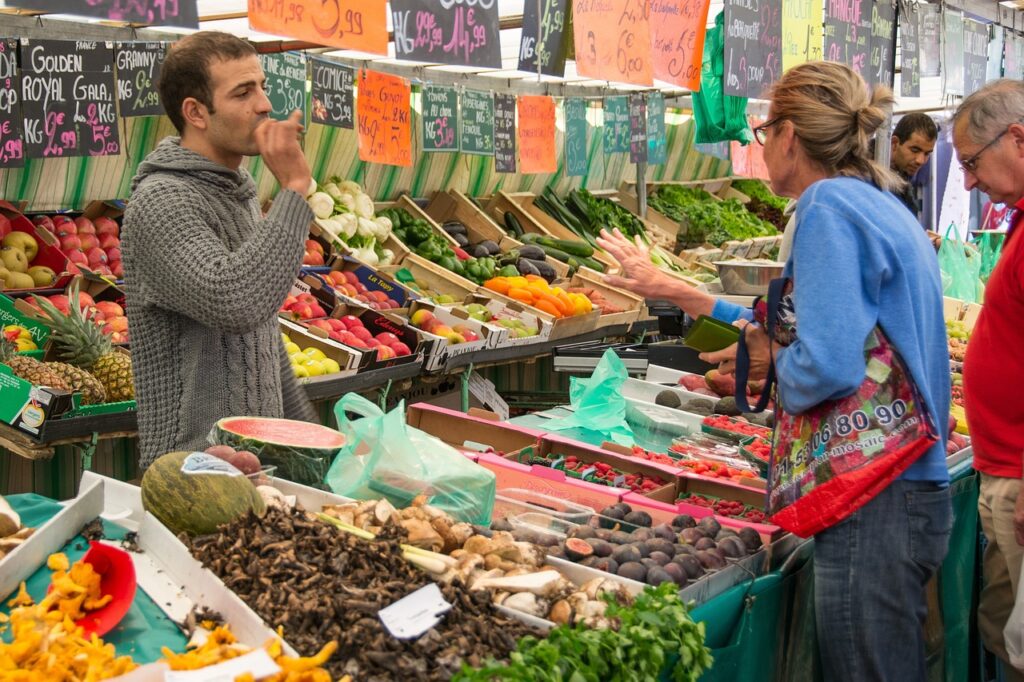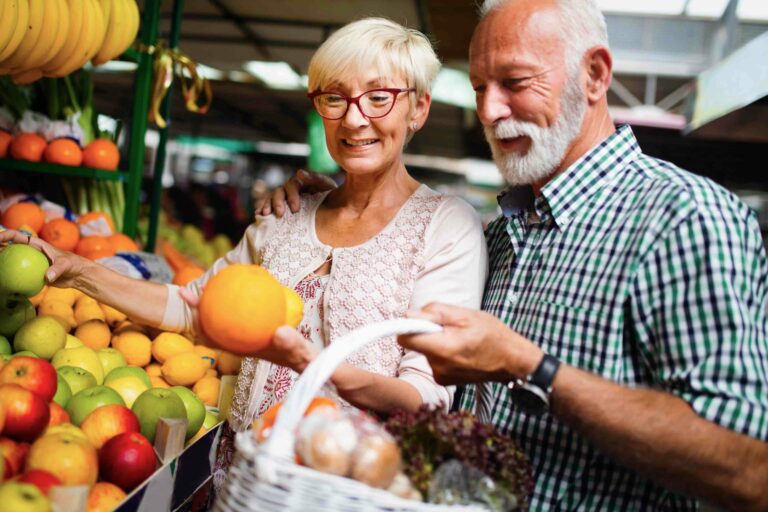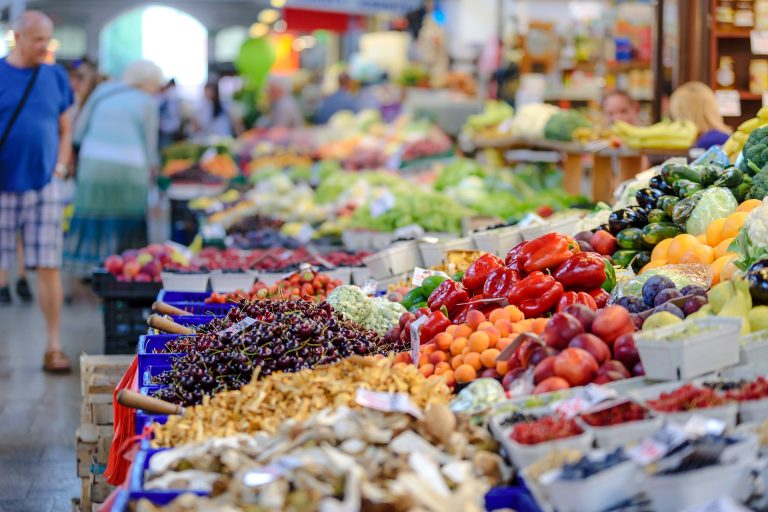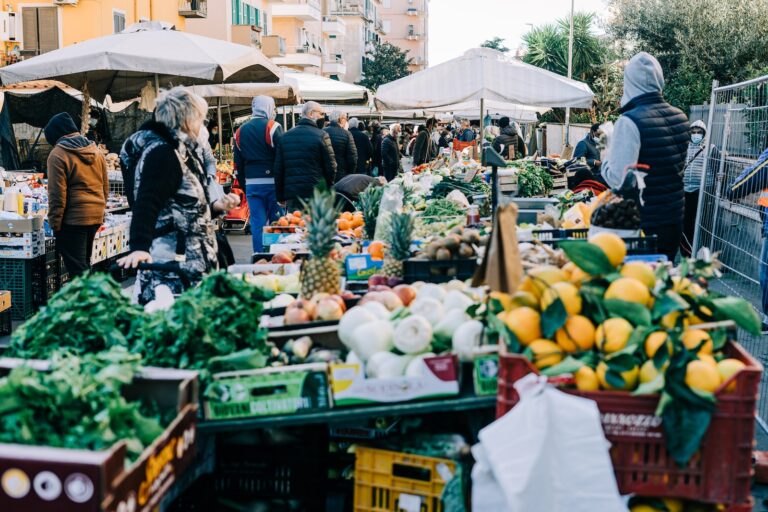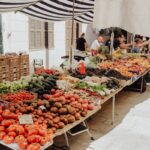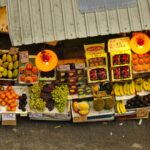Have you ever stumbled upon a diamond in the rough at a farmer’s market?
A farmers’ market gem is that unique, hidden treasure that’s waiting to be uncovered. It’s that surprising ingredient or producer that you haven’t come across before which makes the experience all the more thrilling.
Farmers market products are a treasure trove of fresh, locally sourced produce and handmade crafts. You’ll find everything from seasonal fruits and vegetables to grass-fed meats and fresh farm-baked goods.
But, there’s always that one special vendor that draws your attention. The discovery of a farmers’ market gem is part of what makes the experience so special. It’s exhilarating to come across a product that sets itself apart from everything else. It’s an opportunity to try something you’ve not tasted before or to learn about the story behind a new product.
Maybe it’s the artisanal cheese made from the milk of the farmer’s own cows or the baker who crafts bread from wheat that’s grown and milled on their farm. Or, it’s the small business entrepreneur who creates their own line of syrups and dressings from their own homegrown produce.
The beauty of farmers’ markets is not just about discovering an unusual ingredient; it’s about forging connections with the farmers and producers themselves. These vendors are experts at their craft, and they’ll gladly share their experience and traditions with customers.
So, the next time you’re strolling through a farmers’ market, keep an eye out for a farmers’ market gem.
You never know what delicious treat or unique product you might find.
The Hunt Begins
The Hunt Begins As you step into a Farmer’s Market, you cannot help but be overtaken by its vibrancy.
The air is filled with a multitude of aromas, and the vendors’ voices all ring out in a joyous cacophony. Browsing the market can be an overwhelming experience, with so much to see and take in.
But where to begin? One of the most thrilling aspects of visiting a Farmer’s Market is discovering something unusual. It’s easy to spot the ubiquitous stands of fresh fruits and vegetables.
However, take some time to wander the market, and you may come across some more unique items.
From mushrooms with exotic names like “Lion’s Mane” to wild ramps and fiddlehead ferns, a Farmer’s Market has a wealth of culinary treasures to offer. But browsing is just the tip of the iceberg in the hunt for a Farmers’ Market gem.
Take it a step further by getting to know the farmers. Strike up a conversation with the vendors to learn more about their farming practices, produce, and tips on getting the most out of the ingredients.
Getting to know the farmer not only gives you more knowledge about the product, but it also strengthens the connection between the consumer and the farmer. When you buy from a grocery store, you have no idea where your produce is coming from, or who grew it.
But at a Farmer’s Market, it’s quite the opposite. You can come to understand the hard work that goes into your purchases and develop a sense of community with the farmers, who often live within the same area.
The next time you head to a Farmers’ Market, don’t just browse the stands- dig a little deeper. Find out what’s in season, where the produce came from, and who grew it.
The more you know, the more you’ll appreciate the ingredients. Happy hunting!
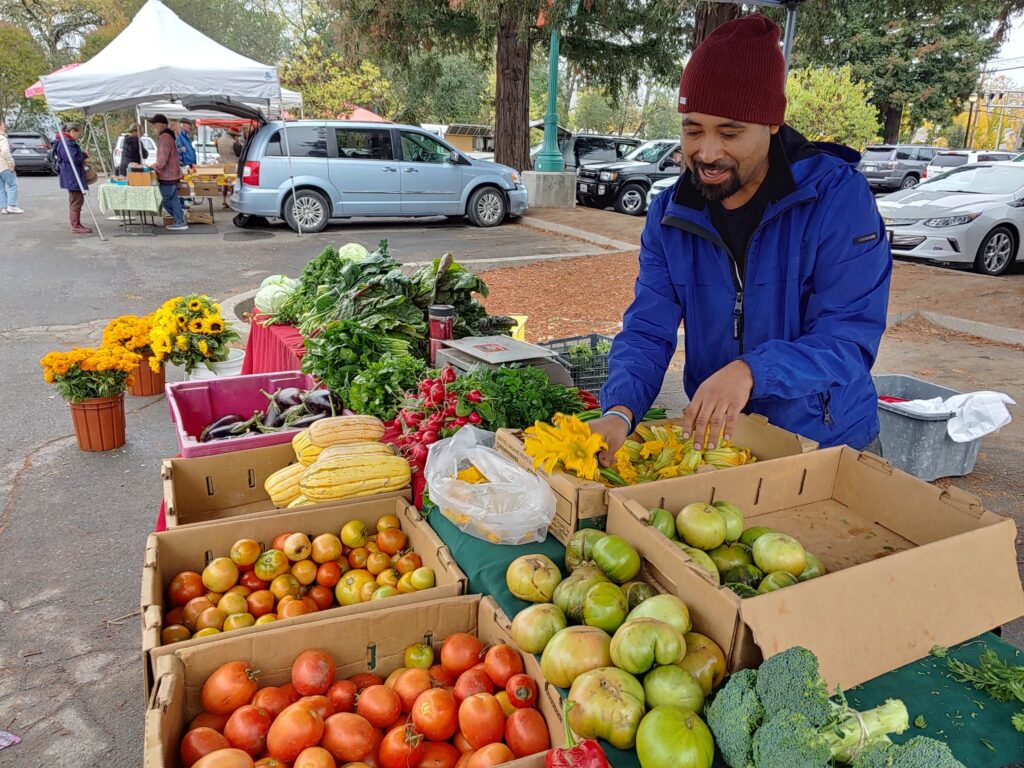
The Growth Process
The Growth Process As we’ve seen, it’s not just farmers’ markets themselves that hold the allure of the story and connection; it’s also the products themselves. As we embark on the next stage of our exploration, it’s time to discover how these gems come into being.
From Field to Market Stall
It all begins with the farmer and their land. The right soil, the right amount of sunshine, and the right type of weather; all need to come together just so as to create the perfect growing conditions. And even then, things can still go awry (cue jokes about talking to plants and dancing in circles).
Once the produce is ready, it needs to be harvested and transported to the farmers’ market. Depending on the size of the farm, this could be done by hand or with machines. And then the transport, whether by truck or bicycle, is a whole other adventure in and of itself.
Harvesting and Preserving
The journey doesn’t end there. Once the produce arrives at the farmers’ market, there’s still work to be done. Will the tomatoes be sold fresh or made into salsa? Will the raspberries be used in jam or eaten whole? These are decisions that need to be made on a daily basis by the farmers themselves.
Then there’s the matter of preserving the produce so that it can last as long as possible. Some farmers will freeze or can their products, while others will dry them out or make them into pickles (cue jokes about there being more ways to preserve food than there are types of produce).
Meeting Quality Standards
Last but certainly not least, there’s the matter of meeting quality standards. Farmers’ markets often have strict rules about what can and cannot be sold, whether it’s because of government regulations or simply a matter of market policy.
Whatever the case may be, farmers need to make sure that their produce is the very best it can be. So there you have it. From the farmer’s land to the market stall, there’s a whole world of work that goes into bringing that delicious produce to your plate.
It’s a process that involves careful planning and execution, with the added bonus of a little bit of luck.
And when you bite into that juicy peach or take a sip of that refreshing lemonade, you’ll know that you’re not just tasting a piece of fruit; you’re tasting a piece of the farmer’s story and hard work.
Storytelling
When it comes to farmers’ markets, one of the most incredible things is having the opportunity to hear stories straight from the farmers themselves.
Unraveling the farmer’s tale is part of the joy of discovering that farmers’ market gem. As you browse the market, you’ll find that the farmers are more than happy to share their experiences and talk about their products.
You might hear about the challenges of the previous season, the hard work involved in farming, or the excitement of bringing a new product to the market. These stories help us dig deeper into connections with our food and the people who grow it.
Often, we have no idea where our food comes from, how it’s grown, and what goes into making it. By meeting the farmer and hearing their story, we can connect with our food on a deeper level. As a consumer, we also play a role in the storytelling process. When we purchase from a farmers’ market, we’re supporting local farmers and their livelihoods.
We’re also contributing to sustainable consumption since we’re reducing the carbon footprint associated with the transportation of food. It’s up to us to spread the word about the importance of farmers’ markets, making sure that others know the benefits of buying local.
By sharing the stories we hear from our farmers, we can help more people understand the value of the farmers’ market and the impact it has on our communities and the environment. So next time you’re at the farmers’ market, take the time to listen to the stories and build connections with the people who grow your food.
Who knows, you might even uncover a new recipe or a new favorite fruit or vegetable. The possibilities are endless when you take the time to delve into the world of the farmers’ market.
After all, isn’t it nice to know where your food comes from and the people behind it?
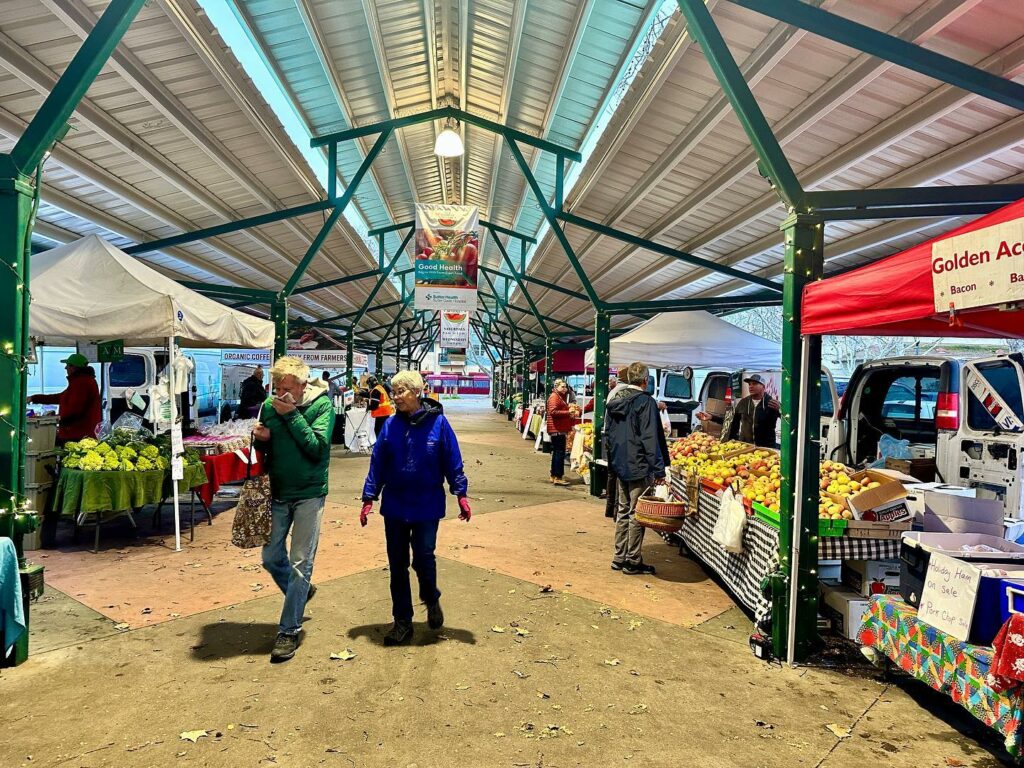
Taste and Experimentation
After exploring the various stalls at the farmers’ market and getting to know the farmers, it’s time to get adventurous with taste and experimentation.
Trying out a new produce is an exciting experience, and it opens up the possibility of discovering unique flavors.
One particular vegetable that caught my eye was purple cauliflower. I had never seen it before, let alone tasted it. When I asked the farmer about it, he shared that it was a newer variety that had been crossbred with broccoli, resulting in a milder and sweeter flavor.
I decided to give it a try and purchased a head of purple cauliflower. When I got home, I wasn’t quite sure what to do with it.
So, I did some research and came across a recipe for roasted purple cauliflower with turmeric and garlic. The results were amazing!
The unique flavor of the cauliflower combined with the turmeric and garlic made for a surprisingly delicious dish. Experimenting with recipes is another fun way to explore the flavors of the farmers’ market.
Don’t be afraid to try new combinations or even make substitutions in your favorite recipes.
One tip is to choose seasonal produce and build your dish around it. For instance, if it’s summertime and tomatoes are in season, why not make a fresh tomato salad with basil and mozzarella?
Not only does trying out new products and recipes lead to new gastronomic experiences, but it also supports the local farmers. By buying from them, you’re helping to sustain the community and local economy.
The farmers’ market experience is not just about buying fresh produce; it’s about discovering new flavors, trying out new recipes, and supporting the local community.
So, the next time you visit the farmers’ market, be open to trying something new and let your taste buds take you on an adventure!
Impact
Supporting local farmers not only benefits the community but also the environment. Farmers’ markets offer a platform for small local farmers to sell their produce to customers who appreciate the value of locally sourced food.
Supporting local farmers ensures that they can continue to provide fresh and healthy food options to the community. Additionally, by choosing to purchase produce from local farmers, there are lower carbon emissions due to less transportation of goods.
This, in turn, reduces the carbon footprint left behind, helping to improve the overall environmental impact of the community.
By supporting local farmers, we are not only embracing a healthier lifestyle but also promoting a sustainable future for generations to come.
Supporting local farmers goes beyond just promoting a healthier lifestyle for ourselves and the community.
By purchasing locally sourced produce, we are also strengthening the local economy and supporting the growth of small-scale farming. In turn, this contributes to the preservation of farmland and rural areas, which are essential for maintaining biodiversity and providing habitats for wildlife.
Additionally, consuming locally grown fruits and vegetables means that the produce is allowed to fully ripen before harvesting, resulting in better nutrient absorption.
By choosing to buy locally, we are not only investing in our own health and the health of the community, but we are also taking a step towards a more sustainable and resilient future.
Choosing locally sourced produce not only benefits the environment and local farmers but also enhances the flavor of meals.
Local produce is often harvested at the peak of its ripeness, which translates into intense flavor and better quality. In contrast, produce that is shipped from faraway places is typically picked before ripening to prevent damage during transportation, resulting in bland and tasteless produce.
By supporting local farmers, we not only ensure that our meals are more flavorful and nutritious but also promote food diversity and cultural traditions.
Additionally, purchasing locally sourced produce reduces the carbon footprint associated with long-distance transportation, contributing to a cleaner and healthier planet.

